A New Energy Approach to Predicting Fracture Resistance in Metals
Abstract
:Highlights
- A new approach to predicting fracture resistance is proposed.
- A correlation was established between the surface and volume stress-deformed states.
- The stress-strain state of the modified Bridgman sample under four load modes was investigated using two methods: nu-merical and experimental.
- The fracture energy and the damage parameter were established as characteristics of resistance to fracture.
Abstract
1. Introduction
2. Numerical Simulations
2.1. Energy Approach for Modelling Damage Accumulation
2.2. Rate-Independent Plasticity
2.3. The Strain Energy Determination
2.4. Model of the Modified Bridgman Sample
3. Experimental Procedures
- The tensile load to Pmax = 12,340 N.
- The sample was preloaded to a force of 5200 N that resulted in stresses equal to the yield point in the sample, then unloaded, and after 2 min, it was reloaded. The loading scheme is presented in Figure 4a.
- The sample was preloaded to a force of 10,950 N that caused stresses equal to the strength limit to occur in the sample, then unloaded, and after 2 min, it was reloaded again. The loading scheme is presented in Figure 4b.
- The sample was prehydrogenated in an autoclave for 96 h and then was under tensile load.
4. Experimental-Computational Approach
5. Results and Discussion
6. Conclusions
- (1)
- FEM calculations of the stress-strain state and damage accumulation in the modified Bridgman sample under conditions reproducing experimental tests were carried out.
- (2)
- It was established that there is a difference in the stress-strain state of the material in the centre and on the surface of the working part of the sample. Higher stress and strain values are reached in the sample centre.
- (3)
- It was established that the fracture energy in the sample centre is significantly higher than its values obtained experimentally from the true stress-strain diagram. In particular, at the fracture moment, the difference is 25% for the load mode I, 20.8% for mode II, 20.5% for mode III, and 35.7% for mode IV.
- (4)
- During the monitoring of the stress-strain state of the surface using the ODIC method, it is necessary to take into account the inhomogeneity of the stress-strain state along the thickness of the structural element. As the results of this work show, at a safe level of the surface layers’ strain on a structural element, a fracture can already begin inside it.
- (5)
- Authors plan to conduct fractographic studies of the microstructural fractures of samples under different loading modes of hydrogenation in order to establish the influence of hydrogen and prestrain on the metal microstructure.
Author Contributions
Funding
Institutional Review Board Statement
Informed Consent Statement
Data Availability Statement
Conflicts of Interest
References
- Djukic, M.B.; Bakic, G.M.; Zeravcic, V.S.; Sedmak, A.; Rajicic, B. Hydrogen embrittlement of industrial components: Prediction, prevention, and models. Corrosion 2016, 72, 943–961. [Google Scholar] [CrossRef]
- Dwivedi, S.K.; Vishwakarma, M. Hydrogen embrittlement in different materials: A review. Int. J. Hydrogen Energy 2018, 43, 21603–21616. [Google Scholar] [CrossRef]
- Wasim, M.; Djukic, M.B.; Ngo, T.D. Influence of hydrogen-enhanced plasticity and decohesion mechanisms of hydrogen embrittlement on the fracture resistance of steel. Eng. Fail. Anal. 2021, 123, 105312. [Google Scholar] [CrossRef]
- Hussein, A.; Krom, A.H.M.; Dey, P.; Sunnardianto, G.K.; Moultos, O.A.; Walters, C.L. The effect of hydrogen content and yield strength on the distribution of hydrogen in steel: A diffusion coupled micromechanical FEM study. Acta Mater. 2021, 209, 116799. [Google Scholar] [CrossRef]
- Lin, M.; Yu, H.; Ding, Y.; Wang, G.; Olden, V.; Alvaro, A.; He, J.; Zhang, Z. A predictive model unifying hydrogen enhanced plasticity and decohesion. Scr. Mater. 2022, 215, 114707. [Google Scholar] [CrossRef]
- Dmytrakh, I.A.; Syrotyuk, A.M.; Leshchak, R.L. Specific features of the deformation and fracture of low-alloy steels in hydrogen-containing media: Influence of hydrogen concentration in the metal. Mater. Sci. 2018, 54, 295–308. [Google Scholar] [CrossRef]
- Dmytrakh, I.M.; Leshchak, R.L.; Syrotyuk, A.M.; Barna, R.A. Effect of hydrogen concentration on fatigue crack growth behaviour in pipeline steel. Int. J. Hydrogen Energy 2017, 42, 6401–6408. [Google Scholar] [CrossRef]
- Ivanyts’kyi, Y.; Hembara, O.; Dudda, W.; Boyko, V.; Shtayura, S. Combined FEM and DIC Techniques for the 2D Analysis of the Stress-Strain Fields and Hydrogen Diffusion Near a Blunt Crack Tip. Strength Mater. 2022, 54, 256–266. [Google Scholar] [CrossRef]
- Weidner, A.; Biermann, H. Review on Strain Localization Phenomena Studied by High-Resolution Digital Image Correlation. Adv. Eng. Mater. 2021, 23, 2001409. [Google Scholar] [CrossRef]
- Nazarchuk, Z.; Voronyak, T.L.; Muravsky, L. Development of the Optical-Digital Methods of Monitoring of the Surfaces of Structural Elements for the Purposes of Technical Diagnostics. Mater. Sci. 2021, 57, 344–354. [Google Scholar] [CrossRef]
- Nazarchuk, Z.; Muravsky, L.; Kuryliak, D. To the problem of the subsurface defects detection: Theory and experiment. Procedia Struct. Integr. 2019, 16, 11–18. [Google Scholar] [CrossRef]
- Sakharuk, O.; Muravs’kyi, L.; Holyns’kyi, I.S.; Lychak, O.V. Determination of the field of local displacements by the digital speckle correlation method with adaptive segmentation of the images. Mater. Sci. 2014, 49, 660–666. [Google Scholar] [CrossRef]
- Maksymenko, O.P.; Sakharuk, O.M.; Ivanytskyi, Y.L.; Kun, P.S. Multilaser spot tracking technology for bridge structure displacement measuring. Struct. Control Health Monit. 2021, 28, e2675. [Google Scholar] [CrossRef]
- Pan, B.; Qian, K.; Xie, H.; Asundi, A. Two-dimensional digital image correlation for in-plane displacement and strain measurement: A review. Meas. Sci. Technol. 2009, 20, 062001. [Google Scholar] [CrossRef]
- Wang, Z. On the accuracy and speed enhancement of digital image correlation technique. J. Exp. Mech. 2011, 26, 632–638. [Google Scholar]
- Luu, L.; Wang, Z.; Vo, M.; Hoang, T.; Ma, J. Accuracy enhancement of digital image correlation with B-spline interpolation. Opt. Lett. 2011, 36, 3070–3072. [Google Scholar] [CrossRef]
- Khan, M.M. Damage Evolution of High Chromium Steels Utilised for High Temperature Components. Master’s Thesis, Technische Universität, Darmstadt, Germany, 2018. [Google Scholar]
- Dutkiewicz, M.; Hembara, O.; Ivanytskyi, Y.; Hvozdiuk, M.; Chepil, O.; Hrynenko, M.; Hembara, N. Influence of Hydrogen on the Fracture Resistance of Pre-Strained Steam Generator Steel 22K. Materials 2022, 15, 6596. [Google Scholar] [CrossRef]
- Panasyuk, V.; Ivanytskyi, Y.; Hembara, O. Assessment of hydrogen effect on fracture resistance under complex-mode loading. Eng. Fract. Mech. 2012, 83, 54–61. [Google Scholar] [CrossRef]
- Zhao, Y.; Le Joncour, L.; Baczmański, A.; Gadalińska, E.; Wroński, S.; Panicaud, B.; François, M.; Braham, C.; Buslaps, T. Stress distribution correlated with damage in duplex stainless steel studied by synchrotron diffraction during plastic necking. Mater. Des. 2017, 113, 157–168. [Google Scholar] [CrossRef]
- Kosuge, H.; Kawabata, T.; Okita, T.; Murayama, H.; Takagi, S. Establishment of damage estimation rules for brittle fracture after cyclic plastic prestrain in steel. Mater. Des. 2020, 185, 108222. [Google Scholar] [CrossRef]
- Kosuge, H.; Kawabata, T.; Okawa, T. Microstructural design strategy to maintain the brittle fracture toughness of hard-soft dual phase steel after cyclic plastic strain. Mater. Des. 2021, 203, 109603. [Google Scholar] [CrossRef]
- Jiang, Q.; Hembara, O.V.; Chepil, O.Y. Modeling of the Influence of Hydrogen on the Accumulation of Defects in Steels Under High-Temperature Creep. Mater. Sci. 2019, 55, 245–253. [Google Scholar] [CrossRef]
- Hectors, K.; De Waele, W. Cumulative damage and life prediction models for high-cycle fatigue of metals: A review. Metals 2021, 11, 204. [Google Scholar] [CrossRef]
- Lazzarin, P.; Susmel, L. A stress-based method to predict lifetime under multiaxial fatigue loadings. Fatigue Fract. Eng. Mater. Struct. 2003, 26, 1171–1187. [Google Scholar] [CrossRef]
- Wei, H.; Carrion, P.; Chen, J.; Imanian, A.; Shamsaei, N.; Iyyer, N.; Liu, Y. Multiaxial high-cycle fatigue life prediction under random spectrum loadings. Int. J. Fatigue 2020, 134, 105462. [Google Scholar] [CrossRef]
- Ge, J.; Sun, Y.; Zhou, S. Fatigue life estimation under multiaxial random loading by means of the equivalent Lemaitre stress and multiaxial S–N curve methods. Int. J. Fatigue 2015, 79, 65–74. [Google Scholar] [CrossRef]
- Chen, J.; Diao, B.; He, J.; Pang, S.; Guan, X. Equivalent surface defect model for fatigue life prediction of steel reinforcing bars with pitting corrosion. Int. J. Fatigue 2018, 110, 153–161. [Google Scholar] [CrossRef]
- Liu, Y.; Mahadevan, S. Multiaxial high-cycle fatigue criterion and life prediction for metals. Int. J. Fatigue 2005, 27, 790–800. [Google Scholar] [CrossRef]
- Liu, Y.; Mahadevan, S. Strain-based multiaxial fatigue damage modelling. Fatigue Fract. Eng. Mater. Struct. 2005, 28, 1177–1189. [Google Scholar] [CrossRef]
- Remes, H. Strain-based approach to fatigue crack initiation and propagation in welded steel joints with arbitrary notch shape. Int. J. Fatigue 2013, 52, 114–123. [Google Scholar] [CrossRef]
- Correia, J.A.F.O.; Jesus, A.M.P.D.; Ribeiro, A.S.; Fernandes, A.A. Strain-based approach for fatigue crack propagation simulation of the 6061-T651 aluminium alloy. Int. J. Mater. Struct. Integr. 2017, 11, 1–15. [Google Scholar] [CrossRef]
- Zhu, S.-P.; Huang, H.-Z.; He, L.-P.; Liu, Y.; Wang, Z. A generalized energy-based fatigue–creep damage parameter for life prediction of turbine disk alloys. Eng. Fract. Mech. 2012, 90, 89–100. [Google Scholar] [CrossRef]
- Letcher, T.; Shen, M.H.; Scott-Emuakpor, O.; George, T.; Cross, C. An energy-based critical fatigue life prediction method for AL6061-T6. Fatigue Fract. Eng. Mater. Struct. 2012, 35, 861–870. [Google Scholar] [CrossRef]
- Wei, H.; Liu, Y. An energy-based model to assess multiaxial fatigue damage under tension-torsion and tension-tension loadings. Int. J. Fatigue 2020, 141, 105858. [Google Scholar] [CrossRef]
- Branco, R.; Costa, J.D.; Borrego, L.P.; Berto, F.; Razavi, J.; Macek, W. Multiaxial fatigue life assessment in notched components based on the effective strain energy density. Procedia Struct. Integr. 2020, 28, 1808–1815. [Google Scholar] [CrossRef]
- Wei, H.; Liu, Y. A critical plane-energy model for multiaxial fatigue life prediction. Fatigue Fract. Eng. Mater. Struct. 2017, 40, 1973–1983. [Google Scholar] [CrossRef]
- Kruch, S.; Prigent, P.; Chaboche, J.L. A fracture mechanics based fatigue-creep-environment crack growth model for high temperature. Int. J. Press. Vessel. Pip. 1994, 59, 141–148. [Google Scholar] [CrossRef]
- Carpinteri, A.; Ronchei, C.; Scorza, D.; Vantadori, S. Fracture mechanics based approach to fatigue analysis of welded joints. Eng. Fail. Anal. 2015, 49, 67–78. [Google Scholar] [CrossRef]
- Cruces, A.S.; Lopez-Crespo, P.; Moreno, B.; Antunes, F.V. Multiaxial fatigue life prediction on S355 structural and offshore steel using the SKS critical plane model. Metals 2018, 8, 1060. [Google Scholar] [CrossRef]
- Chen, J.; Imanian, A.; Wei, H.; Iyyer, N.; Liu, Y. Piecewise stochastic rainflow counting for probabilistic linear and nonlinear damage accumulation considering loading and material uncertainties. Int. J. Fatigue 2020, 140, 105842. [Google Scholar] [CrossRef]
- Zhuang, F.; Chen, P.; Arteiro, A.; Camanho, P.P. Mesoscale modelling of damage in half-hole pin bearing composite laminate specimens. Compos. Struct. 2019, 214, 191–213. [Google Scholar] [CrossRef]
- Eskandari, S.; Andrade Pires, F.M.; Camanho, P.P.; Marques, A.T. Intralaminar damage in polymer composites in the presence of finite fiber rotation: Part i—Constitutive model. Compos. Struct. 2016, 151, 114–126. [Google Scholar] [CrossRef]
- Rahimian Koloor, S.; Karimzadeh, A.; Yidris, N.; Petrů, M.; Ayatollahi, M.; Tamin, M. An Energy-Based Concept for Yielding of Multidirectional FRP Composite Structures Using a Mesoscale Lamina Damage Model. Polymers 2020, 12, 157. [Google Scholar] [CrossRef]
- Koloor, S.S.; Khosravani, M.R.; Hamzah, R.I.; Tamin, M.N. Fe model-based construction and progressive damage processes of frp composite laminates with different manufacturing processes. Int. J. Mech. Sci. 2018, 141, 223–235. [Google Scholar] [CrossRef]
- Koloor, R. Simulation Methodology for Fracture Processes of Composite Laminates Using Damage-Based Models. Ph.D. Thesis, Universiti Teknologi Malaysia, Johor, Malaysia, 2016. [Google Scholar]
- Koloor, S.; Tamin, M. Effects of lamina damages on flexural stiffness of cfrp composites. In Proceedings of the 8th Asian-Australasian Conference on Composite Materials 2012, ACCM 2012, Kuala Lumpur, Malaysia, 6–8 November 2012; Volume 1, pp. 237–243. [Google Scholar]
- Koloor, S.S.; Ayatollahi, M.R.; Tamin, M.N. Elastic-damage deformation response of fiber-reinforced polymer composite laminates with lamina interfaces. J. Reinf. Plast. Compos. 2017, 36, 832–849. [Google Scholar] [CrossRef]
- Ivanytskyi, Y.; Kharchenko, Y.; Hembara, O.; Chepil, O.; Sapuzhak, Y.; Hembara, N. The energy approach to the evaluation of hydrogen effect on the damage accumulation. Procedia Struct. Integr. 2019, 16, 126–133. [Google Scholar] [CrossRef]
- Ansys. ANSYS 2020 R1; ANSYS Europe Ltd.: Canonsburg, PA, USA, 2020. [Google Scholar]

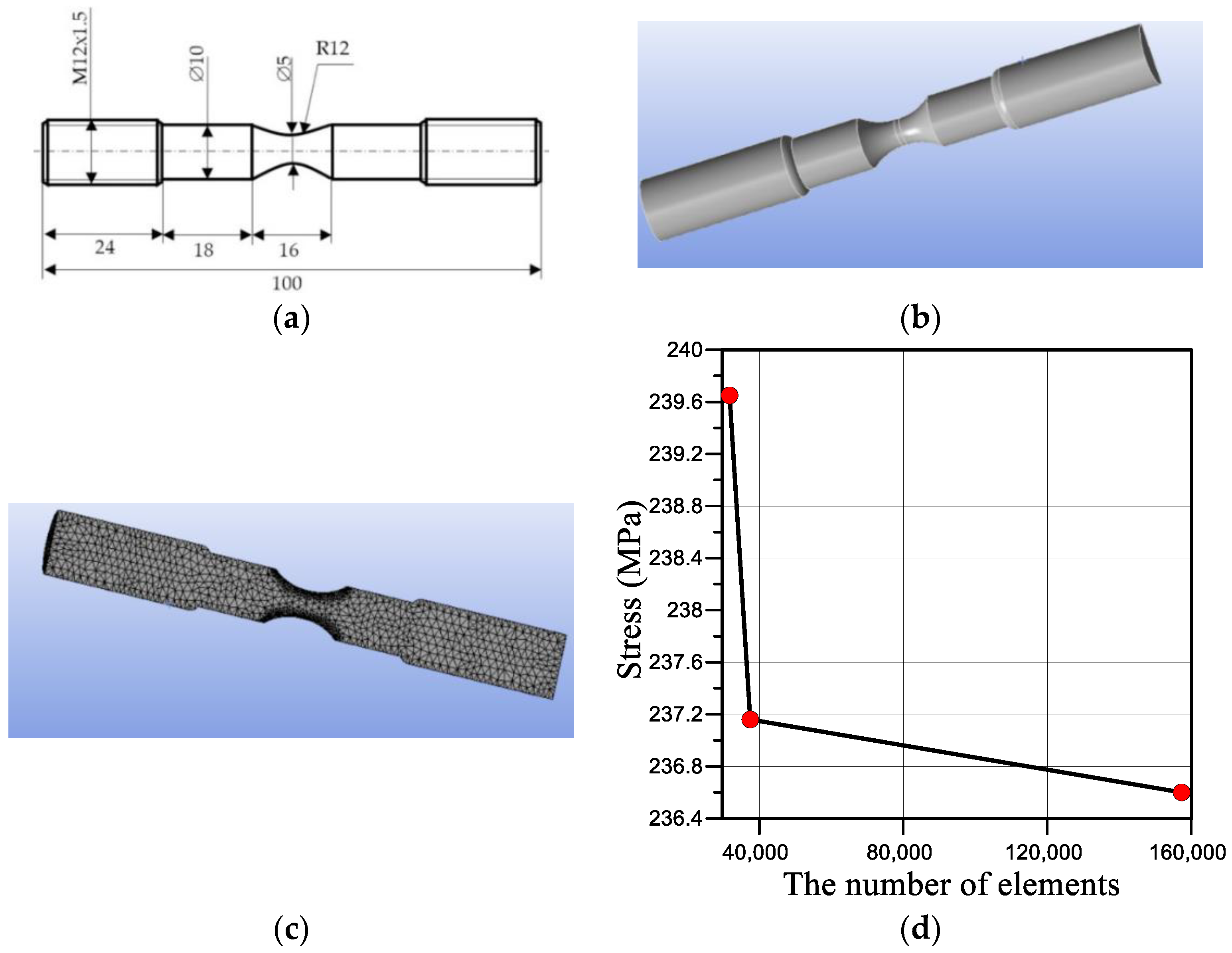
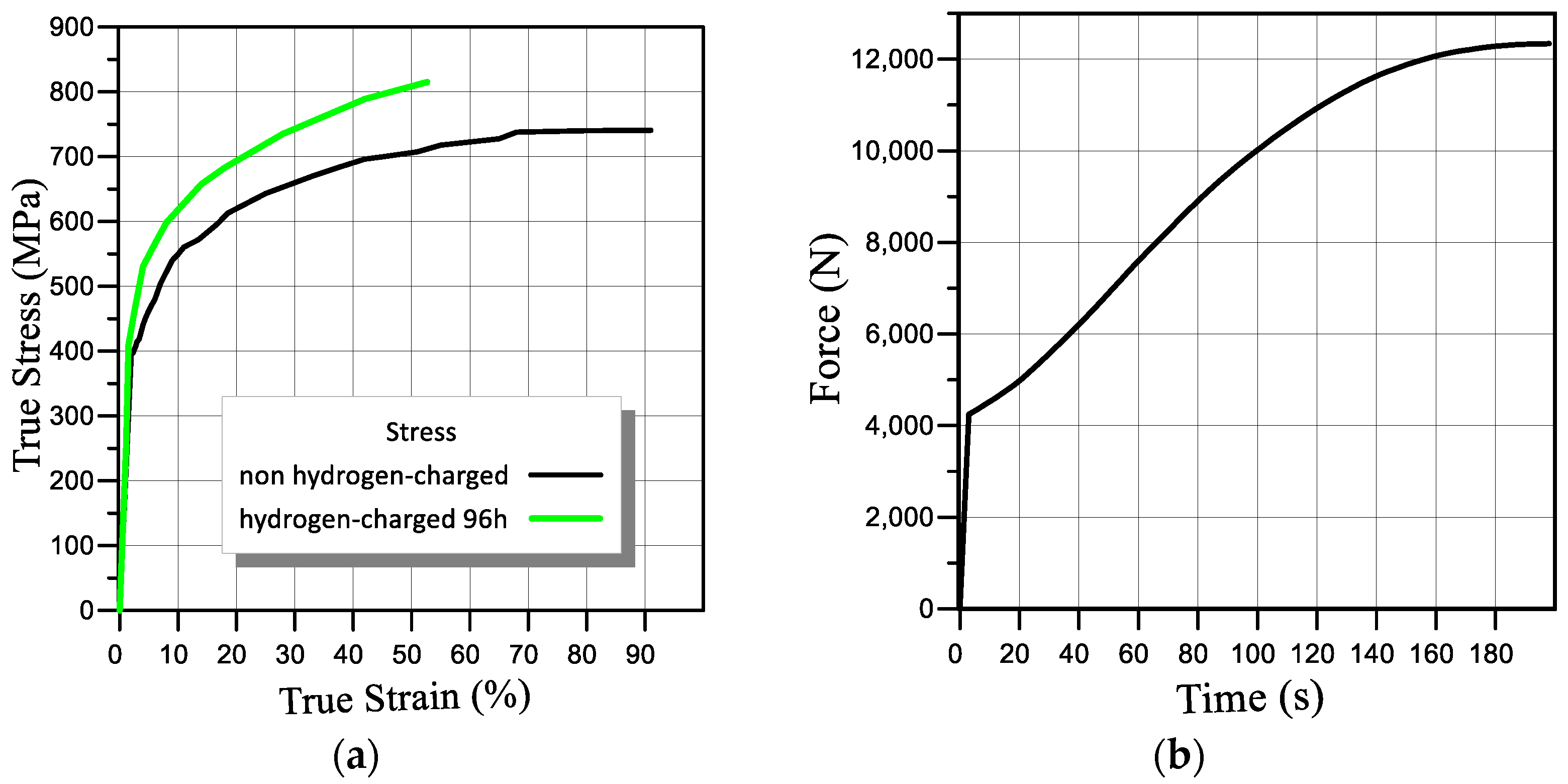
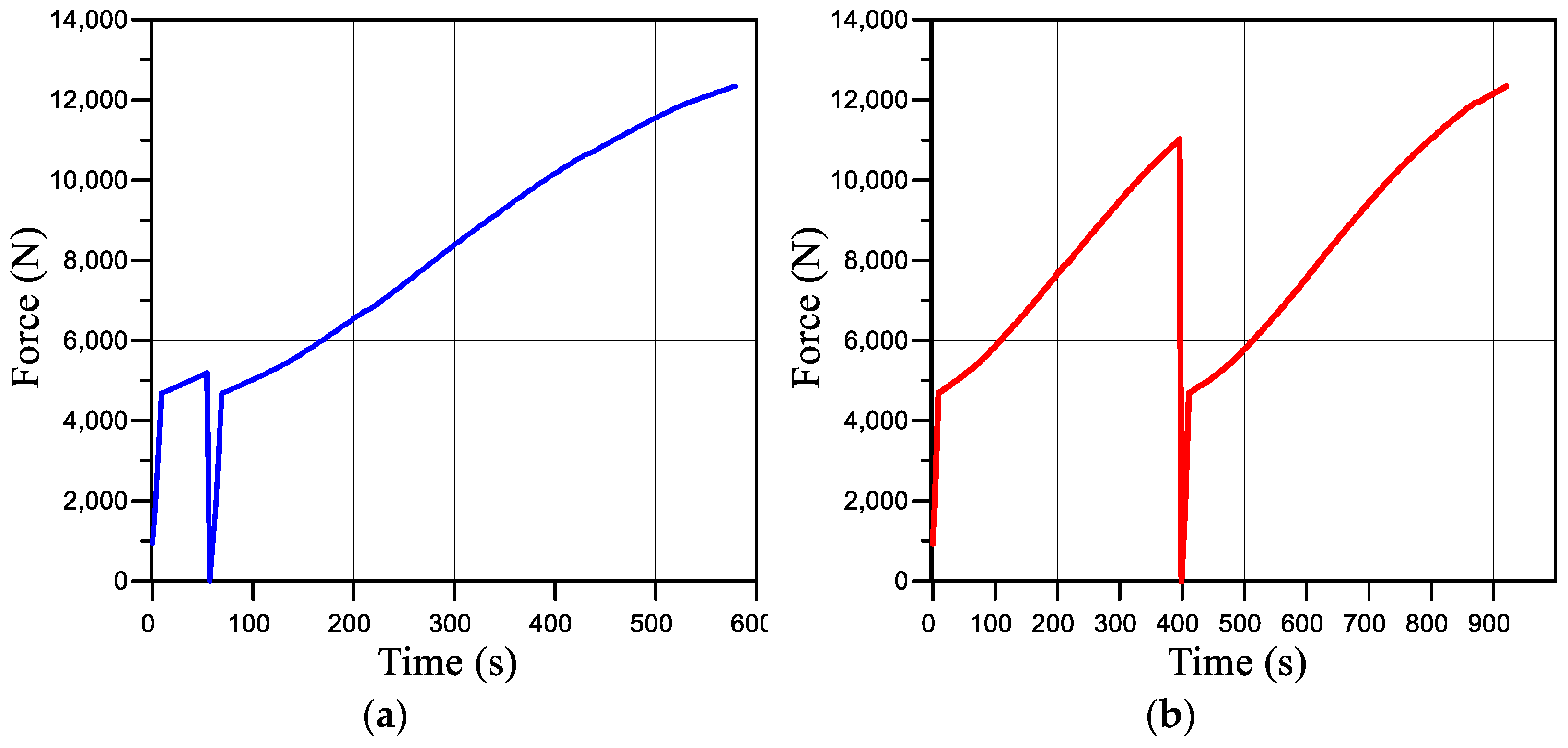



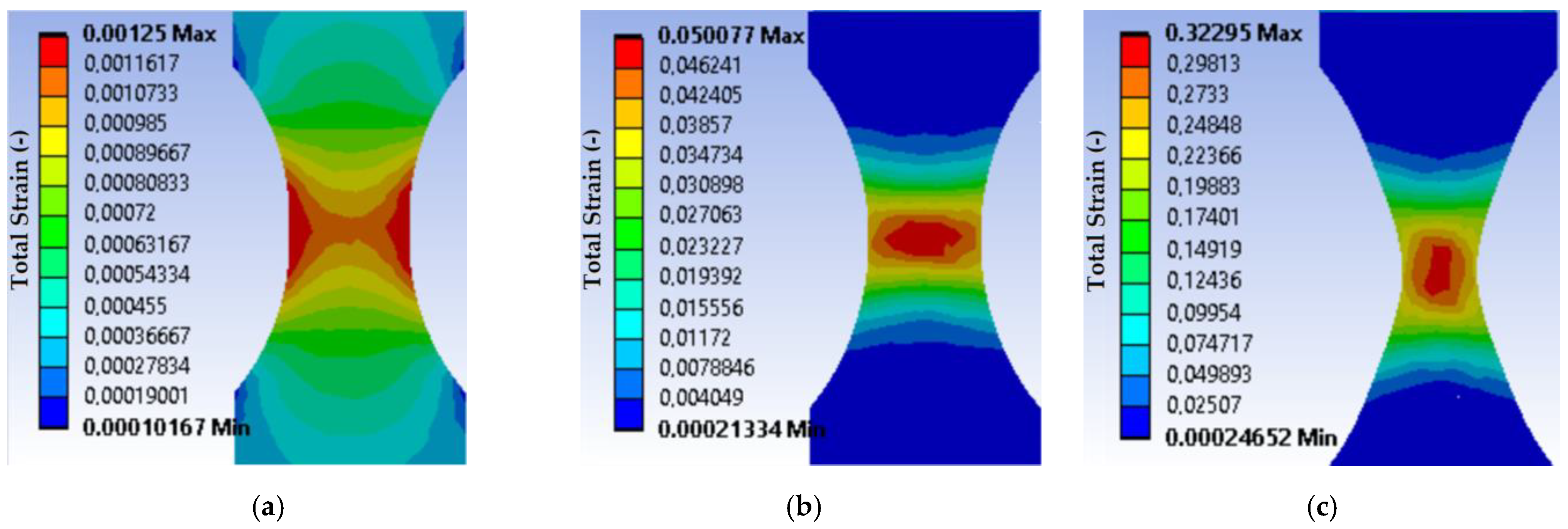

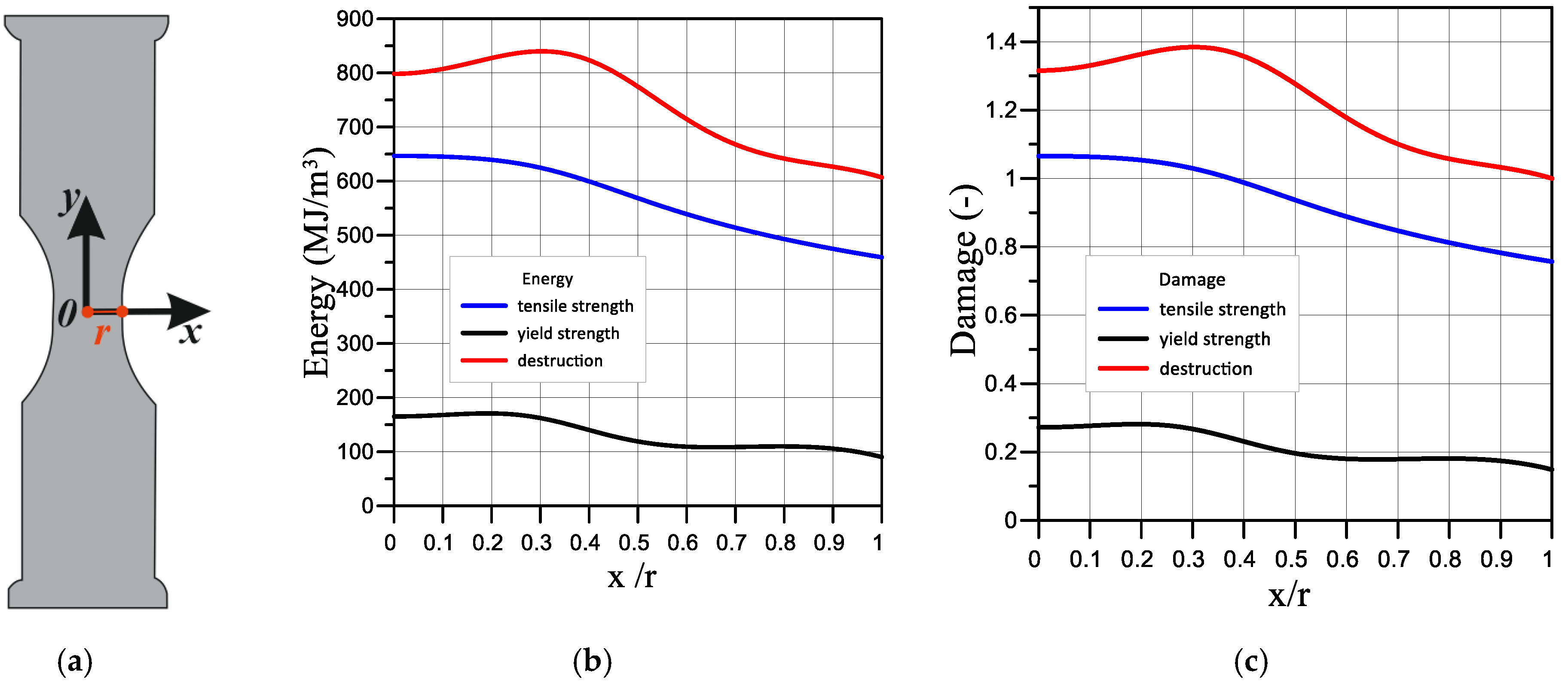

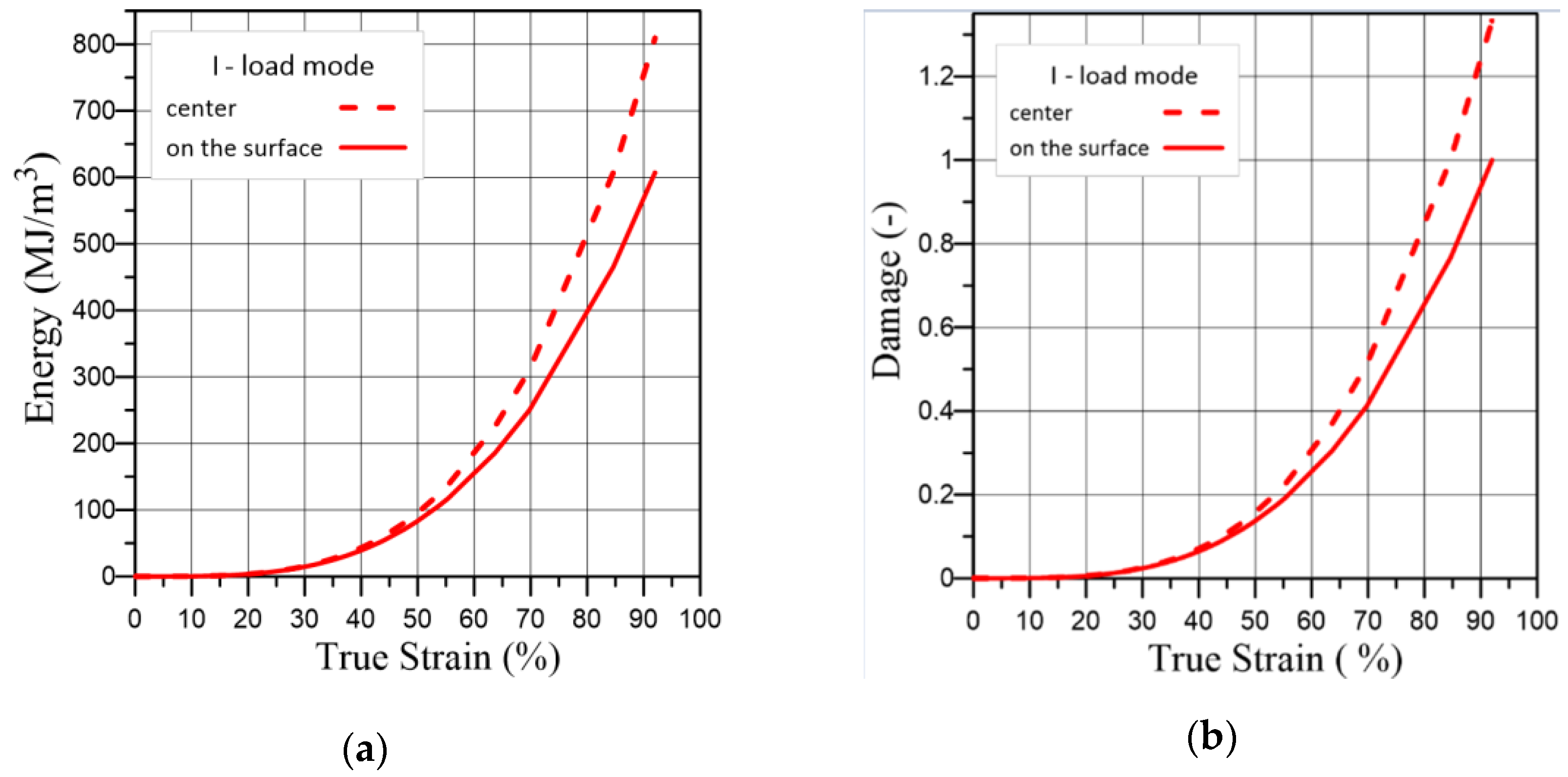
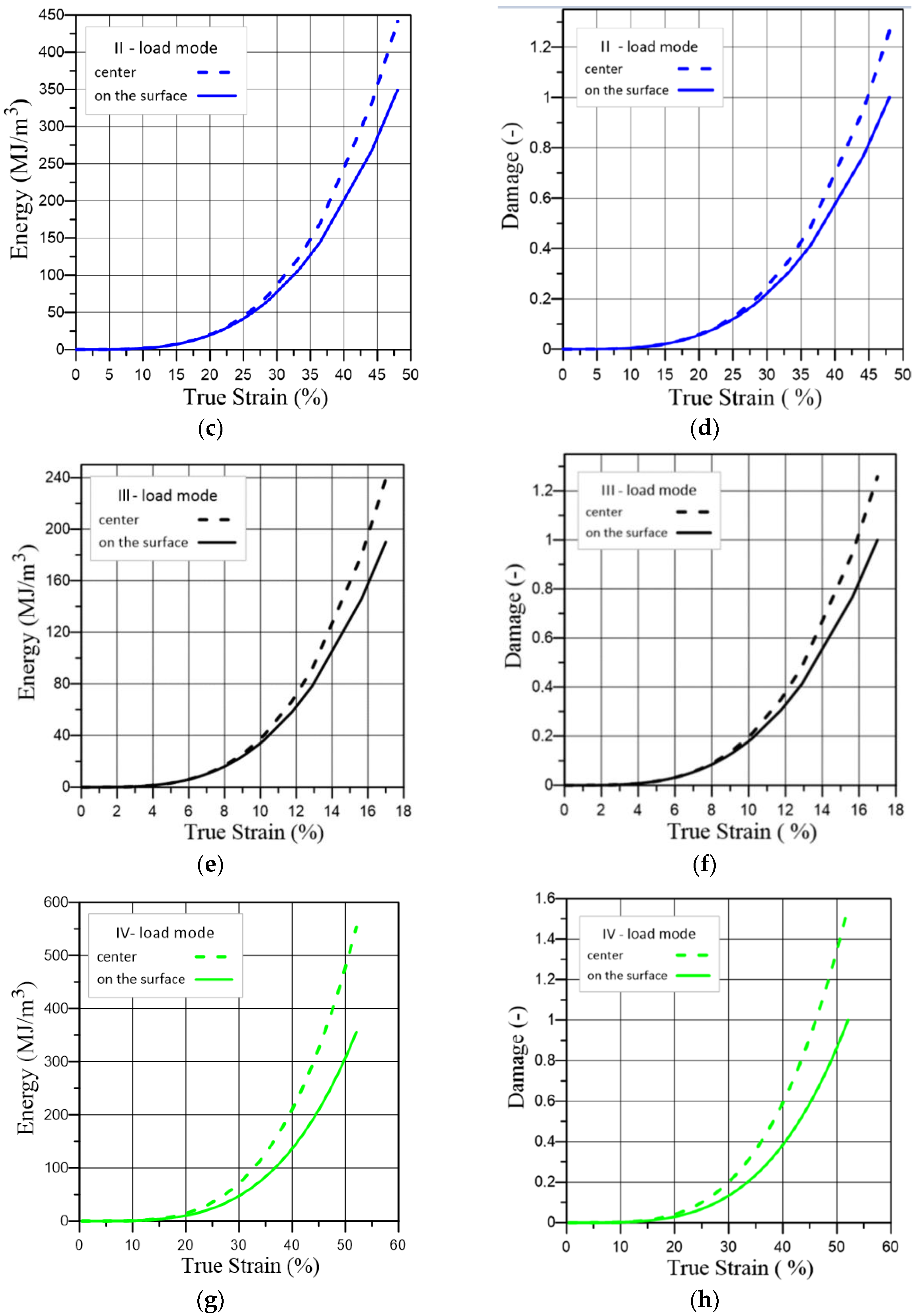
| Area in the Sample | Fracture Energy (WC), MJ/m3 | |||
|---|---|---|---|---|
| Load Mode I | Load Mode II | Load Mode III | Load Mode IV | |
| centre | 809 | 441 | 239 | 554 |
| edge | 607 | 349 | 190 | 356 |
Disclaimer/Publisher’s Note: The statements, opinions and data contained in all publications are solely those of the individual author(s) and contributor(s) and not of MDPI and/or the editor(s). MDPI and/or the editor(s) disclaim responsibility for any injury to people or property resulting from any ideas, methods, instructions or products referred to in the content. |
© 2023 by the authors. Licensee MDPI, Basel, Switzerland. This article is an open access article distributed under the terms and conditions of the Creative Commons Attribution (CC BY) license (https://creativecommons.org/licenses/by/4.0/).
Share and Cite
Dutkiewicz, M.; Hembara, O.; Chepil, O.; Hrynenko, M.; Hembara, T. A New Energy Approach to Predicting Fracture Resistance in Metals. Materials 2023, 16, 1566. https://doi.org/10.3390/ma16041566
Dutkiewicz M, Hembara O, Chepil O, Hrynenko M, Hembara T. A New Energy Approach to Predicting Fracture Resistance in Metals. Materials. 2023; 16(4):1566. https://doi.org/10.3390/ma16041566
Chicago/Turabian StyleDutkiewicz, Maciej, Oksana Hembara, Olha Chepil, Mykhailo Hrynenko, and Taras Hembara. 2023. "A New Energy Approach to Predicting Fracture Resistance in Metals" Materials 16, no. 4: 1566. https://doi.org/10.3390/ma16041566





